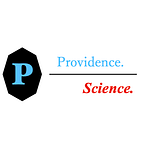At this point I’m just sharing some of my old notes.
I had some random ideas lately, regarding science, tech, and middle (high) school students.
We can (perhaps) all agree on the fact that scientific development is the absolute and necessary foundation for technological advancements. In addition, more recent technological innovations are heavily reliant on advancements in interdisciplinary subjects, demonstrating the importance of scientific collaboration. More interestingly, technological innovations often happen in weird ways, which proves the disadvantages of overspecialization occurring in modern scientific research as well as the need for “non-experts”. Take AlphaGo for example: no one in their team knew about Go, and some members even knew little about computer science, however, they quickly created a revolutionary product that outperformed previously existing technology created by teams of experts and masters in Go. As a personal example, I recently conducted modeling in particulate smog, and I managed to achieve a (somewhat) innovative product due to my lack of knowledge of environmental science (which forced me to take somewhat unusual routes).
This train of thought led to a new insight: perhaps middle school students can become a driving force for innovation! After all, why not give them a good chance to turn their desire for novelty into true curiosity-driven innovation?
Middle school students usually have a broad understanding of many subjects, and a moderately deep understanding of their subject(s) of interest (sometimes due to the need to write something on their college resume). In addition, they have many thoughts and ideas, most of which are premature thoughts or ideas that have not yet been developed. Their mental activity is high; that is, they love to think day and night about random stuff that interests them. Their hobbies are broad, their backgrounds diverse, and their interests sometimes unrestrained. This makes them perfect for producing high-quality, innovative work after just some basic training and practice.
There have been many activities to get middle schoolers to actively engage in the process of scientific innovation, for instance, science fairs. However, much of this is still very much based on utilitarian goals, which can drive middle schoolers in the wrong direction.
The idea here is to create an environment where people with strong interests get together and just “play” with science or scientific ideas, without worrying about prizes, assessments, or creating some major “product” to showcase. As plenty of revolutionary innovation happens during idle thought or strange “mistakes”, we will explore fun, under-researched, and perhaps even seemingly useless areas — basically whatever we are curious about or had the thought to explore. In the end, we may possibly (almost certainly!) discover new insights from novel perspectives. Even if the product is truly useless, the process of such “idle play” can benefit and prepare these students for a lifetime of innovation if they maintain the qualities they had as a kid.
